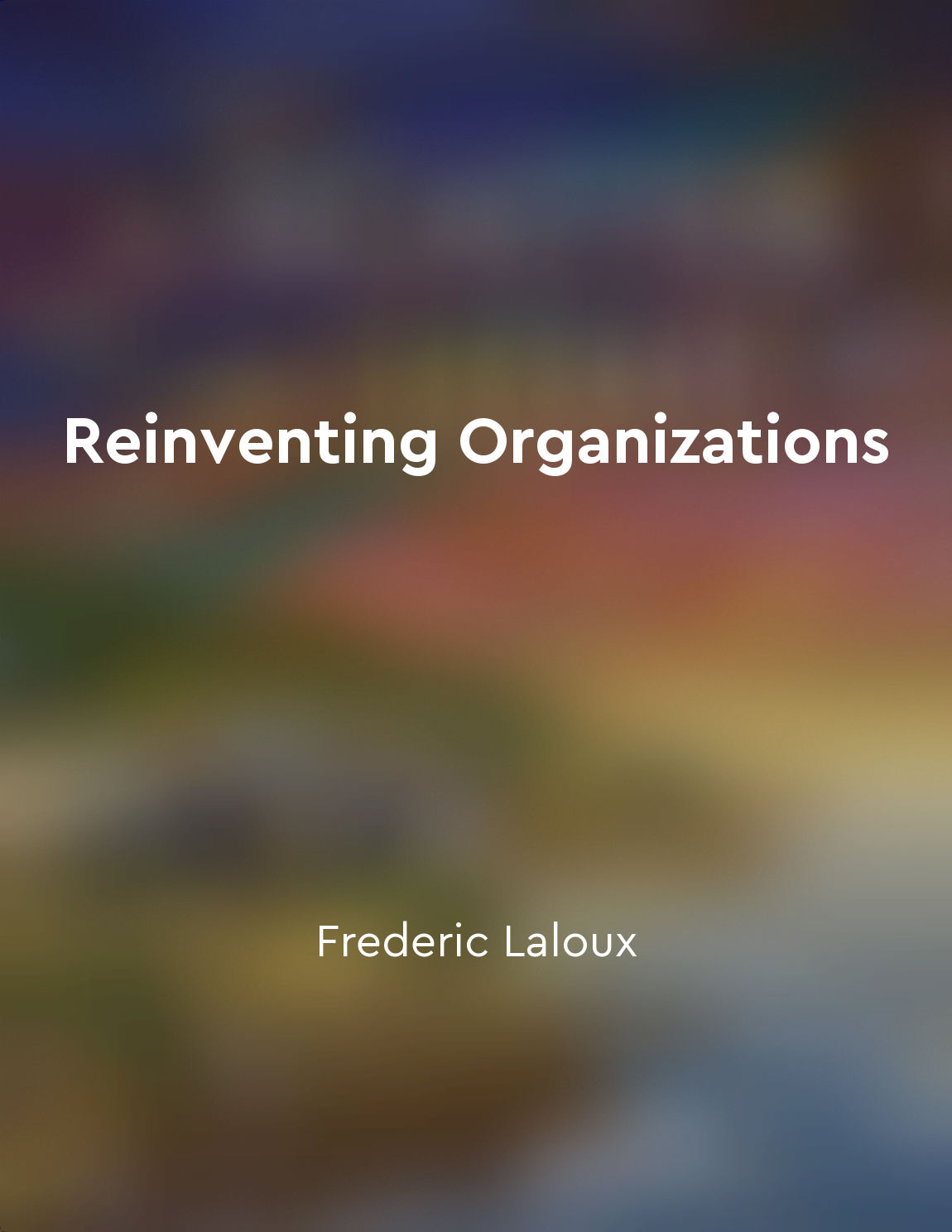Hierarchies are replaced with circles and roles from "summary" of Reinventing Organizations by Frederic Laloux
In organizations that have embraced a new way of operating, hierarchies no longer hold the same power they once did. Instead of rigid top-down structures, circles and roles have taken their place. This shift is not just a superficial change but a fundamental reimagining of how work gets done and decisions are made. Circles are self-organizing groups of individuals who share a common purpose or function. These circles operate with a high degree of autonomy and are empowered to make decisions within their domain. This decentralization of power allows for greater flexibility and responsiveness in the face of complex challenges. Roles, on the other hand, are fluid and dynamic. They are not defined by titles or positions but by the unique contributions that individuals bring to the organization. This means that individuals can step into different roles depending on the needs of the moment, rather than being confined to a single job description. By replacing hierarchies with circles and roles, organizations are able to tap into the collective intelligence and creativity of their members. This leads to more innovative solutions, increased employee engagement, and a stronger sense of ownership over the work being done. This new way of organizing may seem unconventional at first, but it is grounded in a deep understanding of human nature and organizational dynamics. It recognizes that individuals are naturally drawn to autonomy, mastery, and purpose, and that traditional hierarchies often stifle these intrinsic motivations. In embracing circles and roles, organizations are able to create a more agile and adaptive structure that is better suited to the complexities of the modern world. This shift requires a willingness to let go of old ways of thinking and embrace a new paradigm of organizational design. The results, however, can be transformative, leading to higher levels of performance, satisfaction, and fulfillment for all involved.Similar Posts
Communicate openly and transparently with team members and stakeholders
To grow and profit without losing your mind, it is crucial to maintain open and transparent communication with your team member...

Leadership is losing its credibility
Barbara Kellerman argues that the concept of leadership is losing its credibility in modern society. She points out that there ...

Fostering a sense of purpose and meaning for both leaders and employees
Fostering a sense of purpose and meaning for both leaders and employees is a critical aspect of effective leadership. When lead...

Evolutionary purpose guides decisionmaking and actions
In organizations that embrace a teal paradigm, decision-making and actions are not guided by top-down directives or personal ag...

Employees are encouraged to grow and develop personally
The organization places a strong emphasis on the personal growth and development of its employees. This is not just a nice-to-h...

Encourage a growth mindset
Encouraging a growth mindset is essential in a fast-paced and ever-changing work environment. It involves fostering a belief th...
Employees must push for greater transparency and accountability in private governments
In the context of private governments, employees play a crucial role in ensuring that these institutions operate with transpare...

Hierarchical structures inhibit creativity and agility
Hierarchical structures have a tendency to stifle creativity and agility within organizations. When decision-making power is co...
